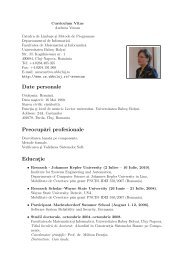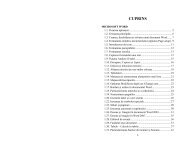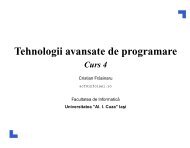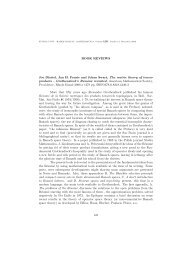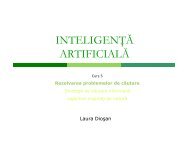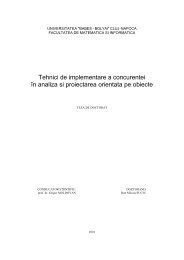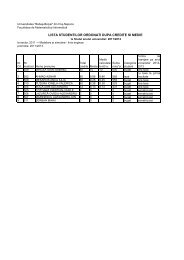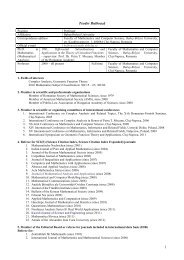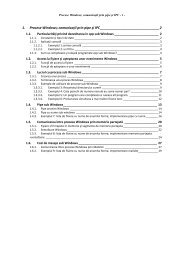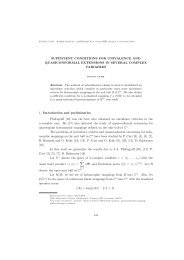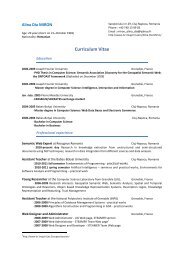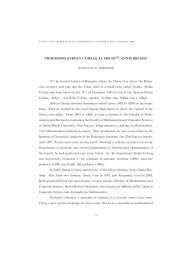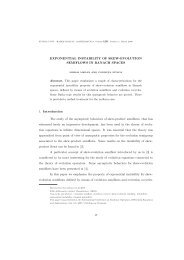CONTENTS
CONTENTS
CONTENTS
You also want an ePaper? Increase the reach of your titles
YUMPU automatically turns print PDFs into web optimized ePapers that Google loves.
KNOWLEDGE ENGINEERING: PRINCIPLES AND TECHNIQUES<br />
Proceedings of the International Conference on Knowledge Engineering,<br />
Principles and Techniques, KEPT2009<br />
Cluj-Napoca (Romania), July 2–4, 2009, pp. 227–230<br />
EFFICIENT RECURSIVE PARALLEL PROGRAMS FOR<br />
POLYNOMIAL INTERPOLATION<br />
VIRGINIA NICULESCU (1)<br />
Abstract. PowerList and PowerArray theories are well suited to express recursive,<br />
data-parallel algorithms. Their abstractness is very high and assures simple<br />
and correct design of parallel programs. This high level of abstraction could be<br />
reconciled with performance by introducing data-distributions into these theories.<br />
We present in this paper the derivation of a correct recursive program for<br />
Lagrange interpolation. The associated costs are analysed and based on this an<br />
improvement of the program is presented.<br />
1. Introduction<br />
In this paper we extend the work presented in [5] by using data distributions<br />
for parallel programs defined using PowerArray structures. Also, by using these<br />
distributions we define also a possibility to define set-distributions.<br />
2. Distributions<br />
The ideal method to implement parallel programs described with P owerLists is<br />
to consider that any application of the operators tie or zip as deconstructors, leads<br />
to two new processes running in parallel, or, at least, to assume that for each element<br />
of the list there is a corresponding process. A more practical approach is to consider<br />
a bounded number of processes np. In this case we have to transform the input list,<br />
such that no more than np processes are created. This transformation of the input<br />
list corresponds to a data distribution.<br />
2.1. PowerList Distributions. Distributions were introduced in [5], where the advantages<br />
are presented of using them, too. Functions defined on PowerLists can be<br />
easily transformed to accept distributions. By formally introducing the distributions<br />
on PowerLists, we can evaluate costs, depending on the number of available processors<br />
- as a parameter.<br />
2000 Mathematics Subject Classification. 68Q85, 65Y20.<br />
Key words and phrases. parallel computation, abstraction, design, distribution, data-structures.<br />
227<br />
c○2009 Babe¸s-Bolyai University, Cluj-Napoca



